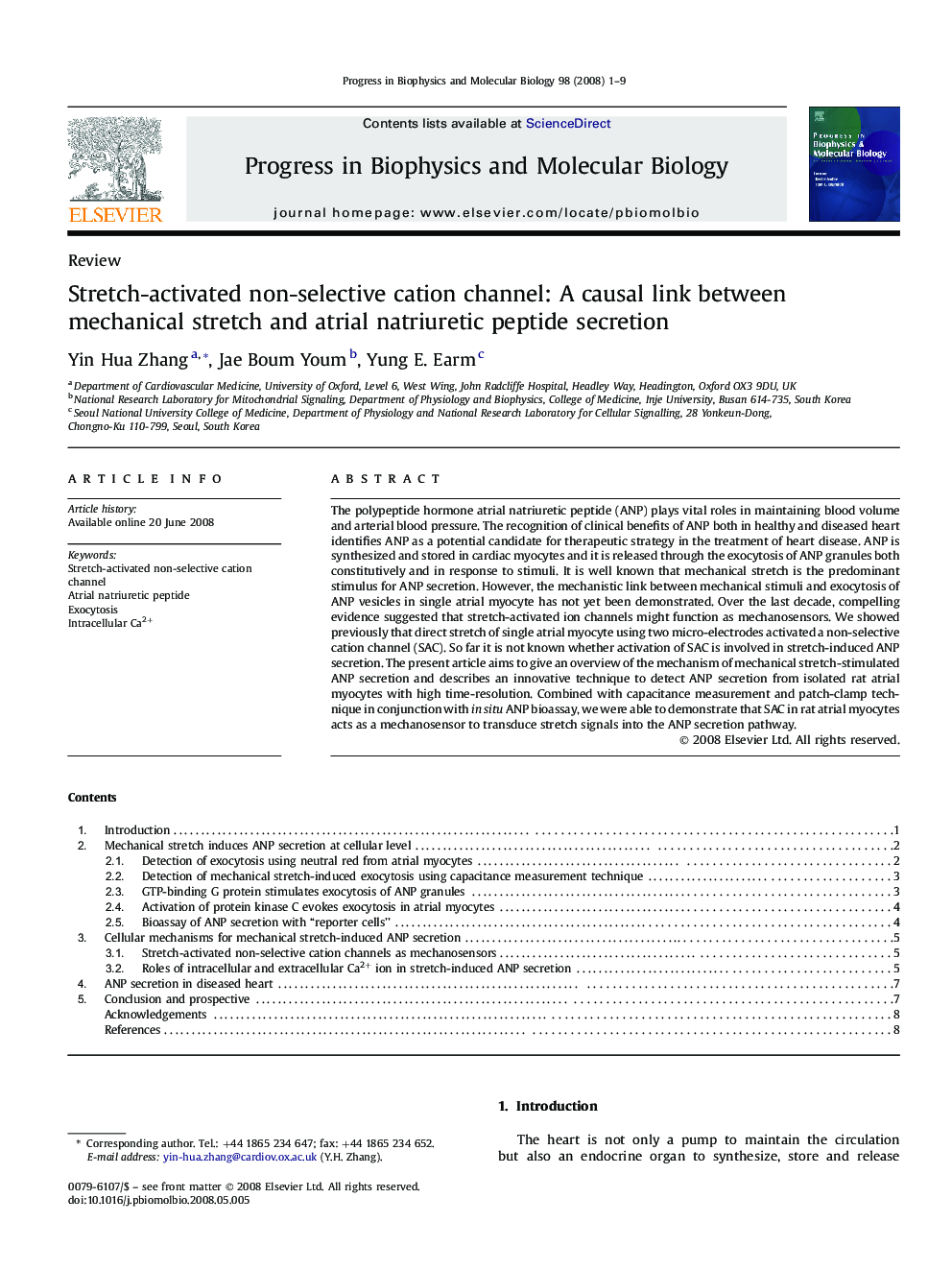| Article ID | Journal | Published Year | Pages | File Type |
|---|---|---|---|---|
| 2070377 | Progress in Biophysics and Molecular Biology | 2008 | 9 Pages |
The polypeptide hormone atrial natriuretic peptide (ANP) plays vital roles in maintaining blood volume and arterial blood pressure. The recognition of clinical benefits of ANP both in healthy and diseased heart identifies ANP as a potential candidate for therapeutic strategy in the treatment of heart disease. ANP is synthesized and stored in cardiac myocytes and it is released through the exocytosis of ANP granules both constitutively and in response to stimuli. It is well known that mechanical stretch is the predominant stimulus for ANP secretion. However, the mechanistic link between mechanical stimuli and exocytosis of ANP vesicles in single atrial myocyte has not yet been demonstrated. Over the last decade, compelling evidence suggested that stretch-activated ion channels might function as mechanosensors. We showed previously that direct stretch of single atrial myocyte using two micro-electrodes activated a non-selective cation channel (SAC). So far it is not known whether activation of SAC is involved in stretch-induced ANP secretion. The present article aims to give an overview of the mechanism of mechanical stretch-stimulated ANP secretion and describes an innovative technique to detect ANP secretion from isolated rat atrial myocytes with high time-resolution. Combined with capacitance measurement and patch-clamp technique in conjunction with in situ ANP bioassay, we were able to demonstrate that SAC in rat atrial myocytes acts as a mechanosensor to transduce stretch signals into the ANP secretion pathway.
